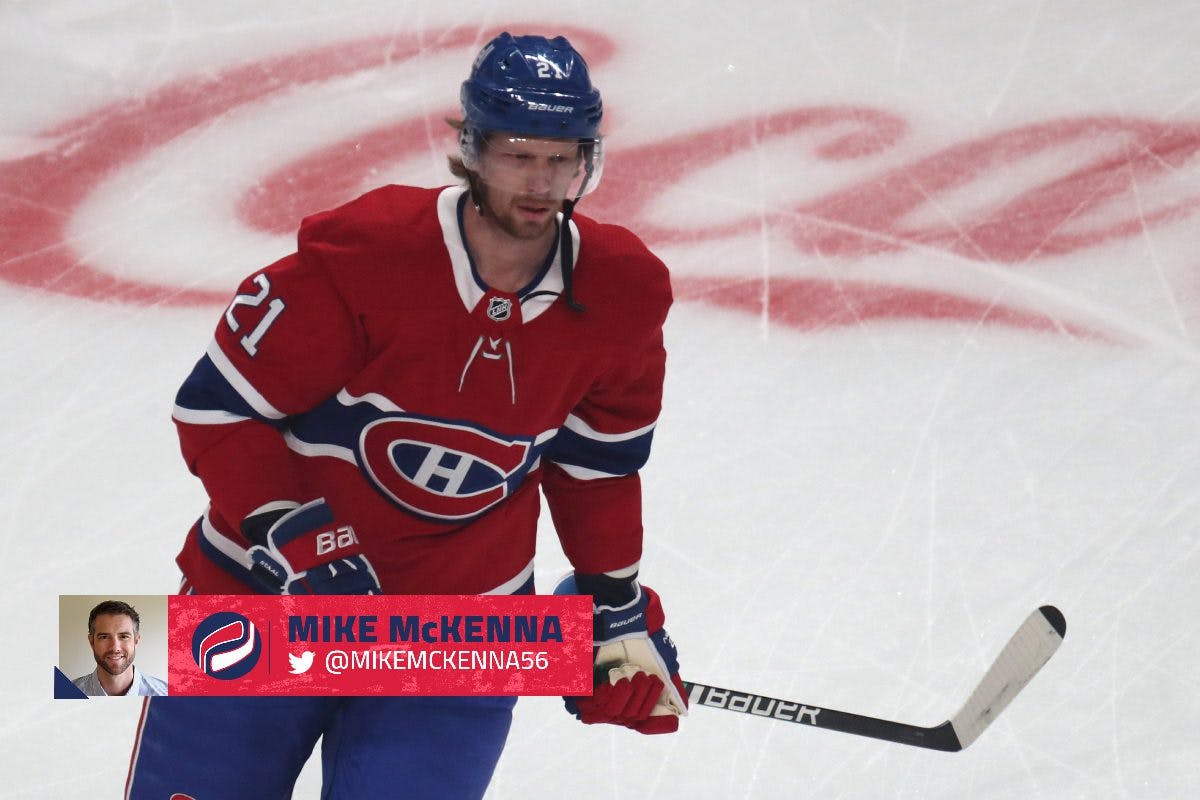Dumpster Diving on PTOs: How the salary cap squeeze has changed veteran contracts

As I wrote last week, NHL teams are paying young players for what they’re going to do, rather than what they’ve done. But that same grace isn’t being extended to veteran NHL players outside the label of stardom. And it’s created a flurry of professional tryout agreements and low-dollar contract signings like I’ve never seen before.
It used to be that attending training camp on a PTO was a big gamble for a player. Sometimes a last-ditch effort to continue an NHL career. Or maybe a new start in a different organization, with a strong likelihood of being assigned to the AHL.
Every year I’d show up at camp and notice names. Players I didn’t expect to get another contract. Or maybe even someone like RJ Umberger, who I attended the 2017 Dallas Stars training camp with. The former first round draft choice of the Vancouver Canucks in 2001 – and veteran of 779 NHL regular season games – hadn’t played professional hockey in over a year.
“I knew the odds were probably stacked against me, but I felt Dallas would give me a fair chance at making the team,” Umberger recalled. “I knew I needed to come in great shape and have a strong camp. I felt my veteran presence and leadership had value. I was excited to show what I could do.”
Injuries had previously derailed Umberger’s career. But from my vantage point in the crease, he looked every bit the talented, hardworking NHL player he once was.
“Camp went well and I had a great discussion with head coach Ken Hitchcock and GM Jim Nill,” Umberger continued. “They both thought I played well and earned a spot on the team. But some of the younger players also played really well. And they wanted to get them in the mix. I completely understood and was thankful for the opportunity. At that point, I pretty much made up my mind that I didn’t need to chase (playing hockey) anymore.”
I thought it really said something about RJ’s drive to put himself through another NHL training camp after that much time off. It takes an entire summer of intense workouts to be prepared. But it’s a different story when a player was in the NHL the previous season.
Like in 2014, when I signed with the Arizona Coyotes organization and Krys Barch showed up for training camp. He had played the prior year for the Florida Panthers, posting four assists and 99 penalty minutes in 55 games played.
Barch may have only been 34 years old at the time, but the game was changing fast. Pure fighters were becoming a rare breed. And he hadn’t played more than 72 games during a season in his NHL career. That happened five years prior in 2009.
I’m not sure why Arizona brought Barch in for camp. He only lasted a week or so. We didn’t need a tough guy. And the roster spots that were open seemed destined for prospects that had grown up within the organization.
There always seemed to be a random PTO in camp that everyone – except the player himself – knew had no chance of making the big club. Back then it was rare for a veteran to walk in and take a job.
It did happen occasionally. In 2015, Scottie Upshall parlayed a PTO with the St. Louis Blues into three seasons of hockey in the Gateway City. But it was a different story for him in 2018 when Upshall attended the Edmonton Oilers training camp and left without a contract. And then again in 2019 when the Dallas Stars released him from his PTO before the regular season began.
Upshall’s experience in 2018 and 2019 was more in line with the usual PTO experience for aging players. But over the past several weeks, there have been several eye-catching PTO’s signed by players who have recently made an impact at the NHL level.
Danny DeKeyser. Calvin De Haan. Zach Aston-Reese. Cody Eakin. Derek Stepan. Eric Staal. Derick Brassard. These are good hockey players at different stages of their careers. And there’s plenty more out there looking for fresh starts in new NHL cities.
What I think has changed is the way players view a PTO. Those names I just mentioned? I believe most of them are going to end up with NHL contracts somewhere. They’re arriving at training camp with the confidence that – at minimum – they’ll have the chance to play in the NHL this coming season.
It didn’t used to be like that. Players on PTO’s were nervous. Even if they had a great camp, a contract might not be offered. And that meant either a demotion to the AHL, or a one-way ticket to the European pro leagues.
No doubt this shift has been perpetuated by the salary cap. Young players are receiving the dollars that used to go to veterans. Just look at some of the signings that have taken place recently.
Mark Giordano is just three seasons removed from winning the James Norris Trophy as the NHL’s top defenseman. He put up 35 points in 75 games last year, splitting time between the Seattle Kraken and Toronto Maple Leafs. Giordano should still be making big money according to those metrics. Instead, he took a two-year sweetheart deal with Toronto – his hometown team – for just $800,000 per season.
Alexander Edler had 19 points in 41 games last year for the Los Angeles Kings. He re-upped with the team in July for just $750,000, with another $750,000 possible in bonuses.
Paul Stastny had 45 points in 71 games last year for a middling Winnipeg Jets team. He can play second-line center and chip in on the power play. Yet Stastny didn’t sign with the Carolina Hurricanes until Aug. 23, when he agreed to a one-year deal worth $1.5 million – and a possible $500,000 in bonuses.
The contracts I just listed were all signed by players over the age of 35. But even some players under that threshold are taking deals below what their numbers should garner.
Evan Rodrigues had a resurgent 2021-22 season with the Pittsburgh Penguins, scoring a career-high 19 times and adding 24 assists. Yet he ended up signing a paltry one-year, $2 million deal with the Colorado Avalanche.
Plenty of other examples exist. But what’s really happening is that NHL teams know they can go dumpster diving on players that for whatever reason have been left without a deal leading into training camp.
Those PTO players? They’re not going to receive big money deals. But a lot of them have already made a decent chunk of money. So at this point, it’s about extending an NHL career.
The extra dollars don’t hurt. Making a million dollars a year to play hockey is still an amazing proposition. But for many it’s simply the draw of winning a Stanley Cup. It’s not a coincidence that Giordano and Stastny signed with contenders. Both players were able to control their own destinies to a certain extent.
I think the way dollars have shifted in recent years is a reminder for young players: get what you can now. Because the chance of getting paid the big bucks late in an NHL career is rapidly becoming a fleeting dream reserved for only the biggest of stars.
_____
POINTSBET IS LIVE IN ONTARIO

Think you know sports? PointsBet Canada is live in Ontario!
Recently by Mike McKenna
- Five goalie prospects to watch in 2022-23
- The Ottawa Senators symbolize everything that has changed about NHL contracts
- What do House of the Dragon, Mario Kart and hockey dressing rooms have in common? A lot
- Want to scrap shootouts forever? Try pond hockey rules in overtime
- NHL training camp goalie battles: Western Conference
- NHL training camp goalie battles: Eastern Conference
More from Mike McKenna
- Ranking every NHL goalie tandem for 2023-24
- Staring down Lou: How standing up for yourself can change a player’s career
- Why it’s time to embrace ‘gambles’ like the Jake Sanderson contract
- Why we shouldn’t view Sheldon Keefe’s contract extension as a vote of confidence
- ‘Two Sean O’Connors?’ NHL training camps bring the funny – and the weird